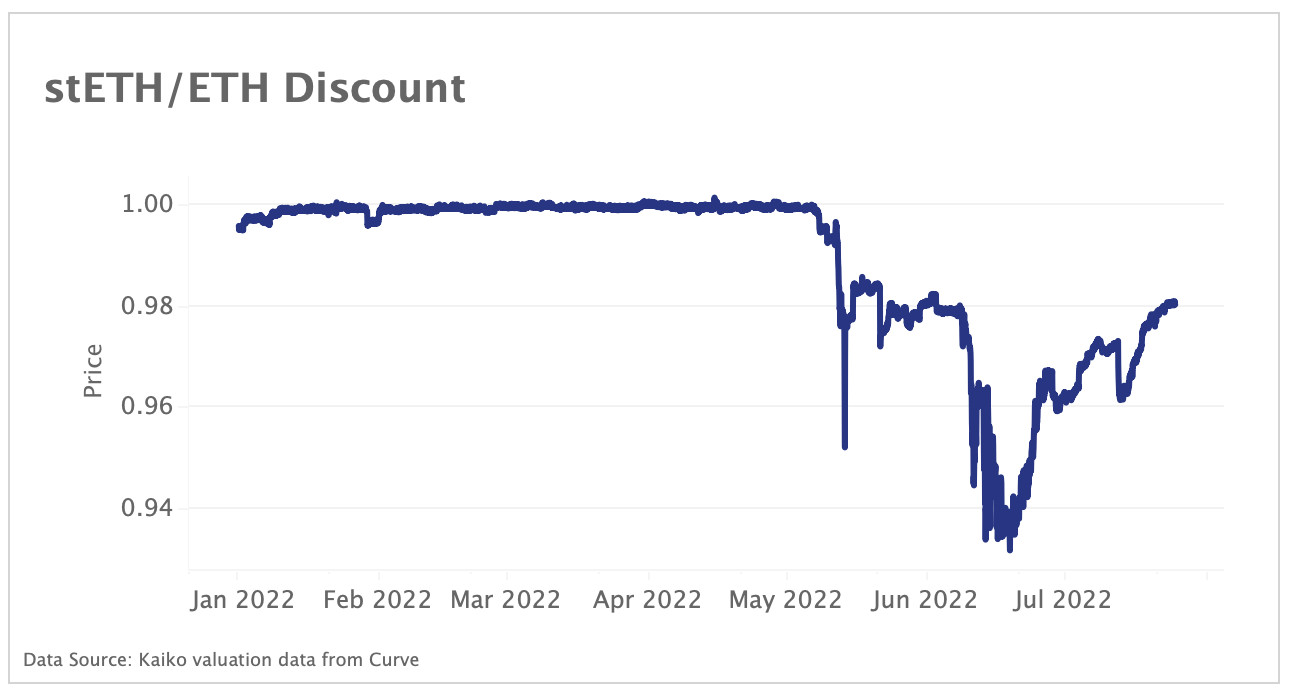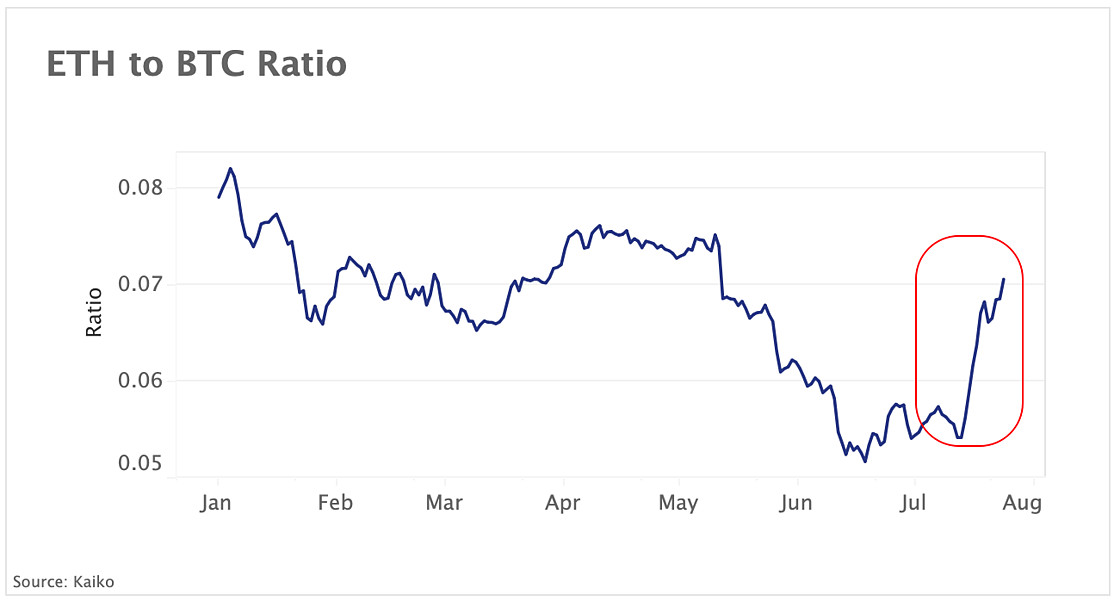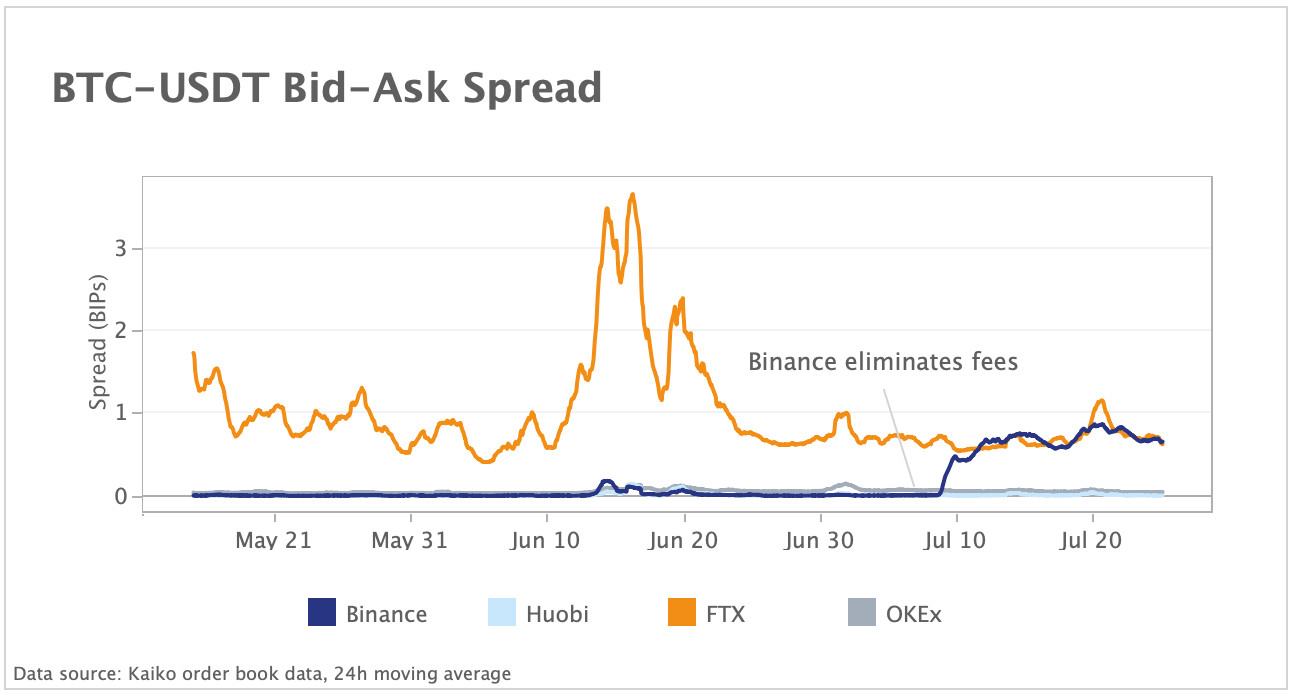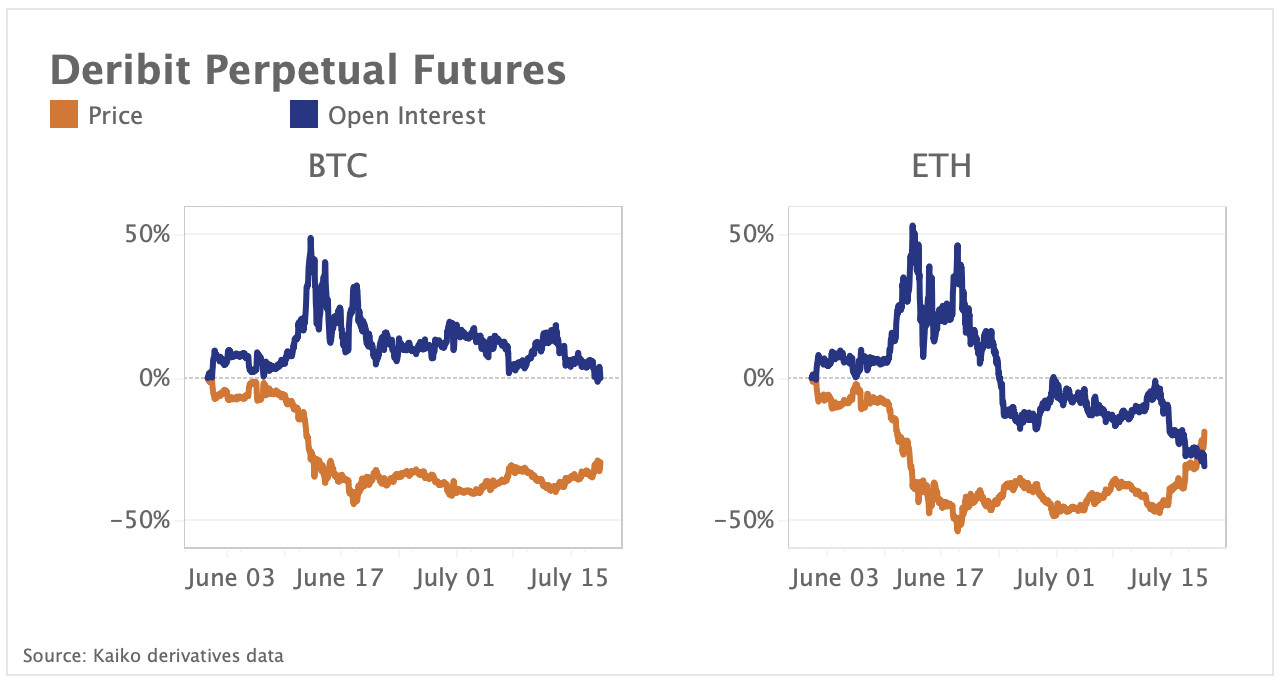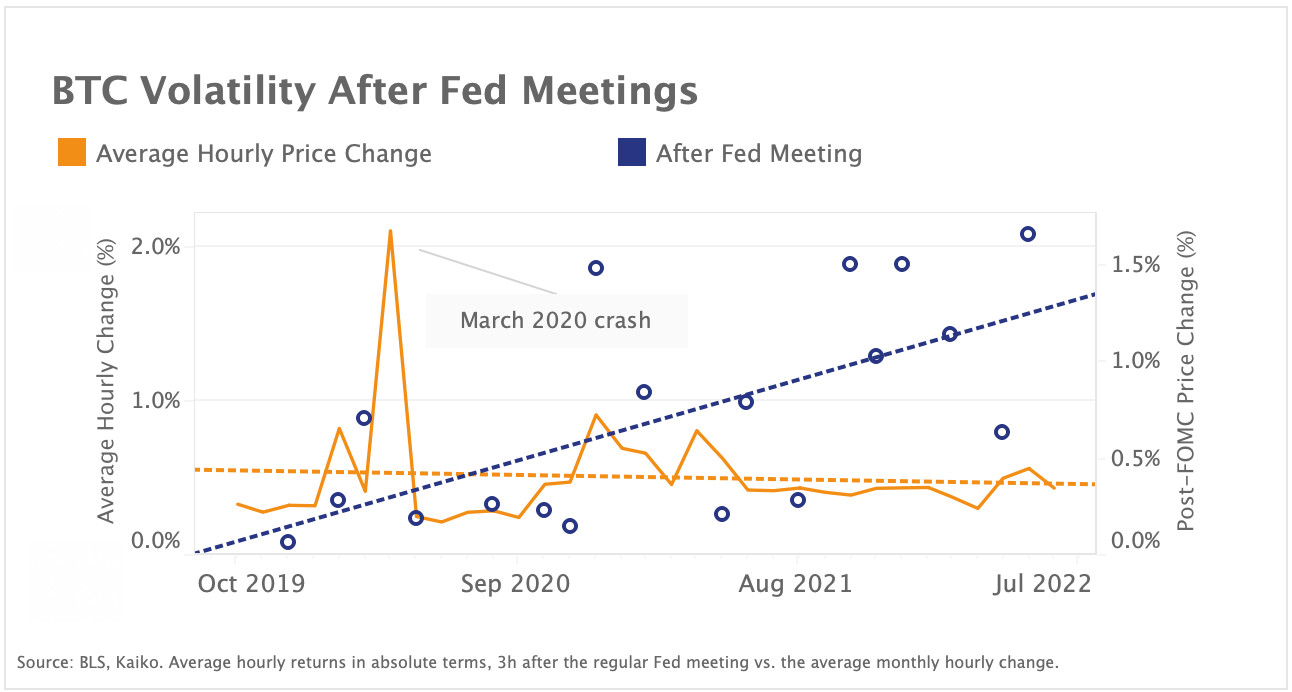A summarizing review of what has been happening at the crypto markets of the past week. A look at trending sectors, liquidity, volatility, spreads and more. The weekly report in cooperation with market data provider Kaiko.
The last 7 days in cryptocurrency markets:
- Price Movements: The ETH-BTC ratio spiked to its highest level in two months. Meanwhile, stETH continues to trade at a discount to ETH ahead of The Merge.
- Order Book Liquidity: One month after Binance eliminated BTC fees, we take a look at how this has altered market structure.
- Derivatives: ETH's put-call ratio dropped to 6-month lows, suggesting options traders are more bullish on ether than bitcoin.
- Macro Trends: An analysis of BTC volatility shows that it surges in the hours after Fed meetings, a trend which first emerged last summer.
Markets trade flat following Tesla BTC sale

A choppy week for crypto markets saw Ethereum (ETH) outperform Bitcoin (BTC), although both assets retraced overnight giving up some of their weekly gains. Markets were hit by the news that Tesla, one of the main catalysts of 2021's bull run, had sold 75% of its bitcoin holdings, worth $936 million. Coinbase came under scrutiny after the Department of Justice and SEC charged a former product manager with wire fraud and insider trading, notably calling nine of the cryptocurrencies involved in the case securities. Three Arrows Capital founders, Su Zhu and Kyle Davies, gave their first interview since the collapse of the hedge fund, blaming trades in Luna, GBTC and stETH for the fund’s demise. On the macro front, the ECB raised rates for the first time in over a decade and anticipation is building for this week's Fed meeting, where they are expected to raise rates another 75bps.
stETH continues to trade at a discount to ETH
Lido staked ether (stETH) continues to trade at a discount to ether on Curve, which is the largest market for stETH, possessing more than 95% of total market share. stETH is issued by the Lido protocol, which is a liquid solution to Ethereum staking ahead of The Merge, allowing users to earn rewards for staking ETH while still being able to use a liquid token across various DeFi protocols. While the price of stETH is irrelevant for long term investors who can redeem 1:1 directly with Lido some time post-merge, the discount meant any forced sellers during the recent mass liquidations were forced to sell their holdings at a significant discount.
However, recent bullish sentiment regarding the Ethereum network, specifically the reveal of a target date for The Merge, has seen the stETH discount decrease to its lowest levels since just before the Terra collapse. As The Merge approaches, investors seem happy to take on the short term liquidity risk that stETH presents under the assumption that they will be able to redeem 1:1 with Lido in the not-too-distant future.
ETH-BTC ratio spikes ahead of The Merge
The ETH/BTC ratio serves as a gauge as to the relative strength of cryptocurrency’s two biggest assets. When the ratio is going up it means that ETH is outperforming BTC and vice versa. Over the last week, we’ve seen this ratio reach its highest level in over two months, nearly recovering to its levels before the Terra collapse in mid May. BTC usually outperforms in bear markets as it is perceived as the safest investment in crypto outside of stablecoins and investors often take a period of ETH outperforming as a bullish indicator for the performance of smaller cap tokens.
We’ve seen improved sentiment around the Ethereum ecosystem in recent weeks as the transition to proof of stake - known as "The Merge" - finally received a target date for September 19. The Merge is expected to reduce the network's energy consumption by 99% and should pave the way for improved scalability with the introduction of sharding at the start of 2023. Scalability and environmental impact have been two of the biggest criticisms of the Ethereum network and a successful, on-schedule transition to proof of stake should help address these issues.
An analysis of Binance market structure following the elimination of BTC fees
It has now been one month since Binance.US first announced they would eliminate trading fees for all BTC pairs. Two weeks later, Binance (global) - the largest cryptocurrency exchange in the world - followed suit, eliminating fees for 13 BTC pairs. Despite surging volumes, liquidity as measured by the bid-ask spread has deteriorated from an average of .03bps to .8bps for the BTC-USDT pair. Binance's BTC-USDT spreads are now comparable to that of FTX's, with Huobi and Okex now possessing the tightest spreads across all crypto markets.
The reason for this sharp shift in market structure could be due to increased costs for market makers; shortly after the elimination of fees, the exchange excluded the 13 BTC pairs from its spot liquidity provider and VIP programs to limit wash trading incentives after BTC-USDT volumes surged to all-time highs (in native units) on July 8th. The programs offer various advantages including reduced market makers’ fees, BNB fee discounts and higher withdrawal limits.
3AC liquidated on Deribit amid legal fight
Last week, news broke that 3AC holds a 17% stake in Deribit, the largest options exchange which is now the subject of a messy dispute over the company's valuation. Deribit claims that 3AC owes the exchange $80mn.
Looking back, it was reported on June 17 that Deribit had liquidated 3AC’s positions (which documents revealed to be BTC and ETH perpetual futures) on the exchange in the previous week. When examining open interest in native units for BTC and ETH perpetual futures on Deribit, we can observe sharp increase and decrease in the days leading up to June 17. In USD terms, total OI for both pairs dropped from $960mn on June 13 to $650mn on June 17, though a large part of the drop can be explained by BTC/ETH price movements. This suggests that while 3AC may have had a large position on the exchange, it was far from systemically important, and the company’s stake in Deribit is still valuable.
BTC volatility spikes in the hours after Fed meetings
As we enter another Fed week, we look at Bitcoin’s reaction to Fed meetings over the past two years. Bitcoin’s volatility - as measured by the absolute hourly returns - increases significantly in the hours after Fed meetings, a trend that first emerged in the summer of 2021. The trend is mirrored by BTC's rising correlation with risk assets and demonstrates the growing impact of key macro data releases on crypto markets. Average volatility is around .5% while in 2022, average volatility after Fed meetings fell between 1-2%.
The market’s reaction to key data releases and central banks’ speakers will likely amplify further in the following months, as both the Fed and the ECB are adopting a more data-driven approach to monetary policy forsaking the so-called forward-guidance. The ECB announced a “meeting-by-meeting” approach while last month the Fed unexpectedly hiked rates by 75bs - instead of the initially telegraphed 50 bps - in the face of hotter than expected consumer price inflation data.


